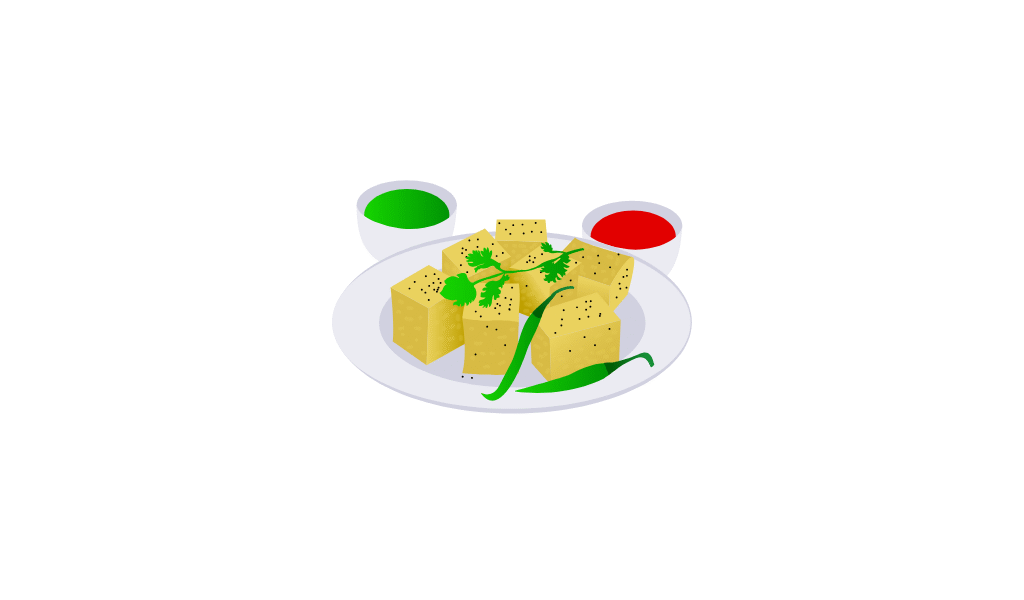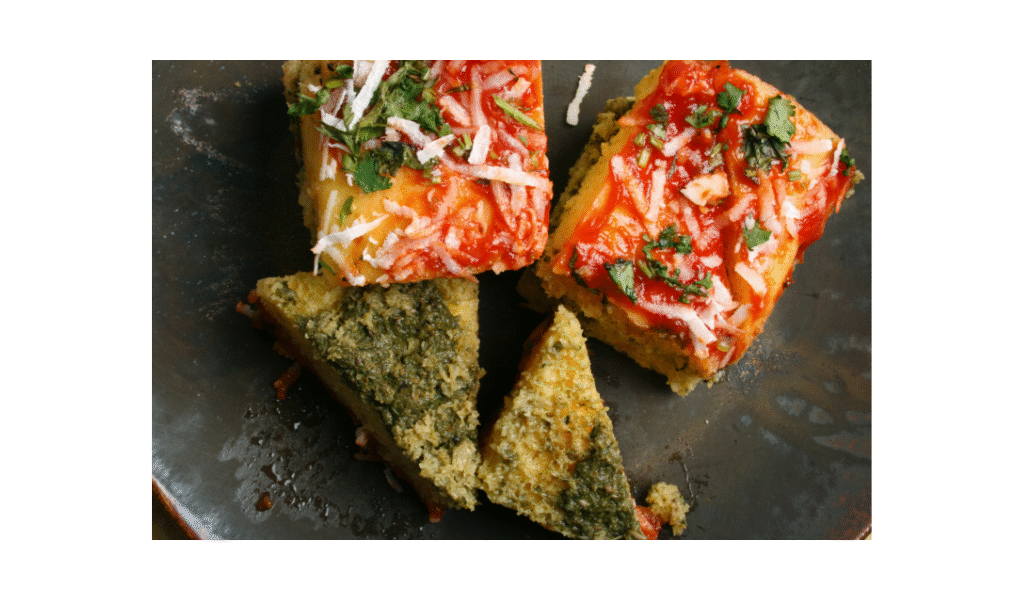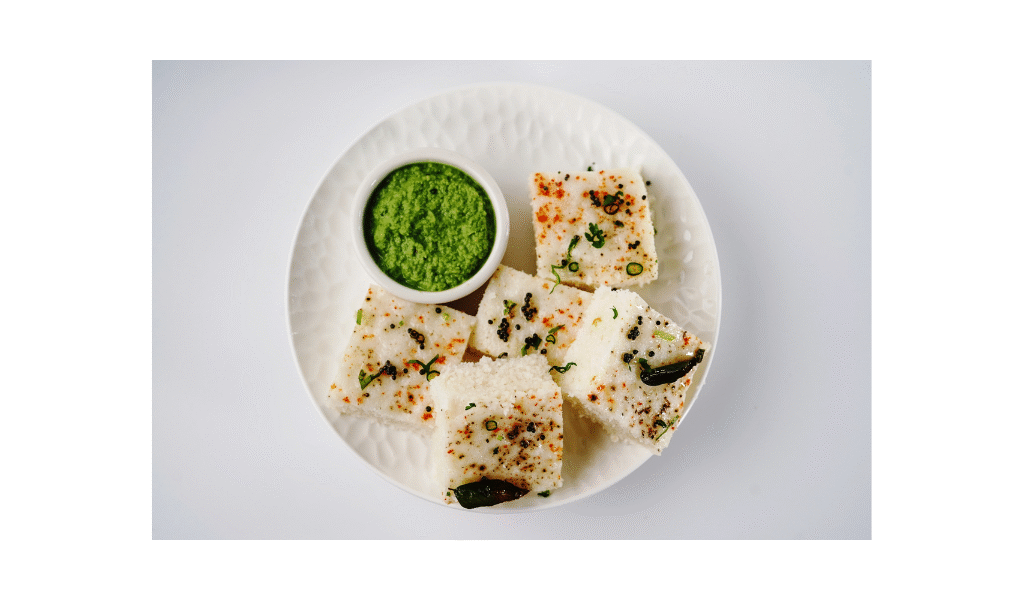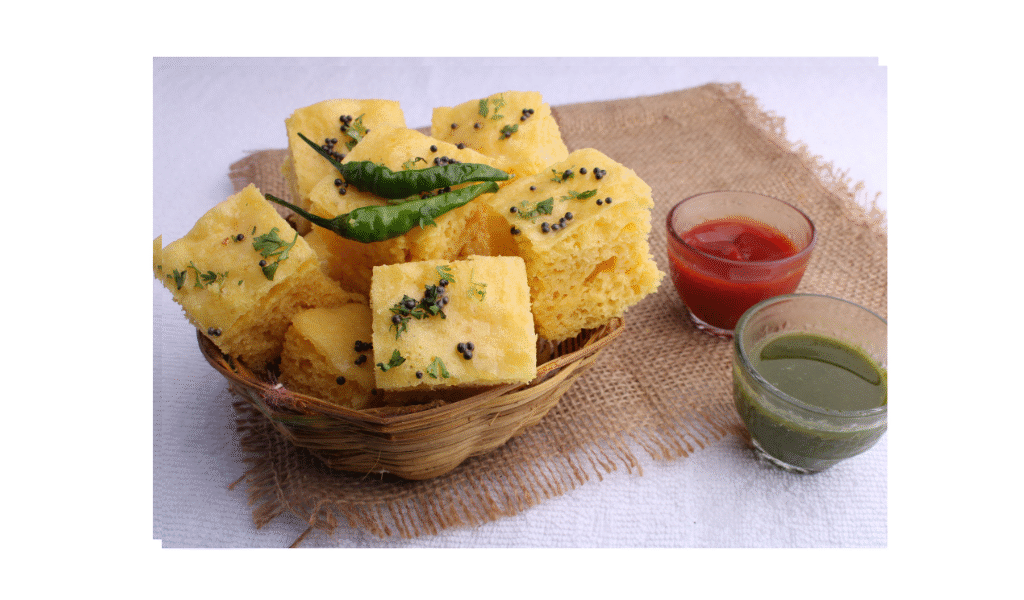Introduction
Few Indian snacks can rival the charm of Khaman Dhokla. Soft, fluffy, and spongy, this savory steamed cake from Gujarat is more than just a snack — it is an experience. Whether served as a breakfast item, an evening tea-time companion, or a festive dish, Khaman Dhokla has earned love across India and even overseas. It’s light, protein-rich, and refreshingly tangy with a hint of sweetness, making it an irresistible treat.
In this article, we’ll explore the story behind dhokla, its health benefits, the ingredients and tools you’ll need, step-by-step instructions, useful tips, variations, and finally, serving suggestions. By the end, you’ll not only know how to cook Khaman Dhokla but also appreciate why it holds such a special place in Gujarati kitchens.

The Story Behind Dhokla
Dhokla originates from Gujarat, a western state of India famous for its vegetarian cuisine. Historical references suggest that fermented lentil cakes have existed in Gujarati households for centuries. Traditionally, dhokla was made with a fermented batter of rice and Bengal gram (chana dal), requiring long soaking and fermentation time.
However, with evolving lifestyles, the instant version of Khaman Dhokla was born. Using gram flour (besan) instead of soaked lentils and incorporating fruit salt (Eno) or baking soda, homemakers found a way to make soft, fluffy dhokla within minutes. Today, this instant version is what most people know as Khaman.
Interestingly, while the terms “dhokla” and “khaman” are sometimes used interchangeably, they are slightly different. Traditional dhokla (made from fermented rice and lentil batter) has a denser texture, while khaman (made from besan) is lighter and fluffier.

Why Khaman Dhokla Is Good for You
Beyond its delightful taste, khaman dhokla also scores high in nutrition:
- Rich in protein: Made from gram flour, it provides plant-based protein for vegetarians.
- Light and low-fat: Since it’s steamed, not fried, it is easier on the stomach and waistline.
- Fermentation-friendly: If using a fermented batter, it enhances gut health.
- Diabetic-friendly (in moderation): Low glycemic index makes it better than fried snacks.
- Gluten-free: A great option for those avoiding wheat.
Pair it with a cup of green chutney, and you have a wholesome, guilt-free indulgence.

Ingredients You’ll Need
To make soft, spongy Khaman Dhokla, gather the following:
For the Batter:
- 1 cup besan (gram flour) – finely ground for smooth texture.
- 1½ tbsp semolina (rava/suji) – gives body and prevents stickiness.
- 1 tbsp sugar – balances tanginess.
- ½ tsp turmeric powder – for golden color.
- 1 tsp ginger-green chili paste – adds a gentle kick.
- 1½ tbsp lemon juice or ½ cup sour curd – for tang and fermentation effect.
- ¾ cup water – adjust for flowing consistency.
- Salt – as per taste.
- 1 tsp fruit salt (Eno) – key to instant fluffiness (or ½ tsp baking soda + 1 tsp oil).
For Tempering (Tadka):
- 2 tbsp oil
- 1 tsp mustard seeds
- 1 tsp sesame seeds
- 2–3 green chilies (slit)
- 8–10 curry leaves
- 2 tsp sugar dissolved in ¼ cup water – sweetens and moistens the dhokla.
Garnish:
- Freshly chopped coriander leaves
- Grated coconut (optional, but authentic)

Equipment You’ll Need
- A steamer or a large pot with lid
- A flat plate or thali (or cake tin) that fits inside the steamer
- A whisk to beat air into the batter
- A ladle or spatula
Step-by-Step Method
Step 1: Prepare the Batter
- In a mixing bowl, add besan, semolina, sugar, turmeric, ginger-chili paste, and salt.
- Gradually add water and whisk to a smooth, lump-free batter. The consistency should be slightly thicker than pancake batter.
- Add lemon juice (or curd) and mix well.
- Just before steaming, stir in fruit salt (Eno) and whisk gently. The batter will become frothy and rise — this is what gives khaman its airy texture.
Tip: Do not overmix after adding fruit salt; fold gently and steam immediately.
Step 2: Steam the Dhokla
- Grease a flat thali or tin with oil.
- Pour the batter immediately into the plate, filling only halfway to allow space for rising.
- Place the plate in a steamer with boiling water. Cover and steam for 12–15 minutes.
- To check doneness, insert a toothpick — it should come out clean.
- Let it rest for 5 minutes, then cut into squares or diamond shapes.
Step 3: Prepare the Tempering (Tadka)
- Heat oil in a small pan.
- Add mustard seeds; let them crackle.
- Add sesame seeds, curry leaves, and slit green chilies. Sauté for a few seconds.
- Add water with sugar and bring it to a quick boil.
- Pour this tempering evenly over the cut dhokla pieces, ensuring every bite soaks in the flavors.
Step 4: Garnish and Serve
- Sprinkle fresh coriander leaves and grated coconut.
- Serve warm or at room temperature with green chutney (coriander-mint) and imli chutney (sweet tamarind).
Pro Tips for the Perfect Khaman Dhokla
- Fresh fruit salt is a must – stale Eno won’t give the desired fluffiness.
- Steam immediately after adding fruit salt to prevent deflating.
- Consistency matters – too thick batter = dense dhokla; too thin = flat dhokla.
- Do not over-steam – it may harden.
- For extra softness, add 1 tbsp oil into the batter.
Variations of Khaman Dhokla
- Nylon Khaman: Extremely soft and silky, made with extra sugar and lemon in the batter.
- Suji Khaman: Uses semolina as the base instead of besan.
- Sandwich Dhokla: Layers of white dhokla and khaman with chutney in between.
- Baked Dhokla: A modern twist, baked in an oven instead of steaming.
- Microwave Dhokla: Quick version ready in just 5 minutes.
Serving Suggestions
- Pair with spicy green chutney and sweet tamarind chutney.
- Serve as part of a Gujarati thali with farsan, kadhi, and rotli.
- Enjoy with a cup of hot masala chai in the evening.
- Use leftover dhokla to make dhokla chaat by adding sev, curd, and chutneys.
Common Mistakes to Avoid
- Adding fruit salt too early.
- Overfilling the steaming plate.
- Lifting the lid repeatedly while steaming.
- Using coarse besan (results in grainy texture).
Conclusion
Khaman Dhokla is more than just food; it is a representation of Gujarat’s ingenious culinary tradition — creating magic with the simplest of ingredients. The balance of tangy, sweet, and spicy flavors, combined with its feather-light texture, makes it a versatile dish for every occasion.
By following this guide, you can master the art of making khaman dhokla at home — soft, fluffy, and full of authentic taste. Once you try it, you’ll understand why this humble steamed cake is cherished across India and beyond.
So the next time you crave a snack that’s light yet satisfying, whip up a plate of khaman dhokla, and let your kitchen fill with the irresistible aroma of Gujarat’s most beloved delicacy.

hello saurabh bol rha hu
hellooo
hey
hey
i dont care
vele log